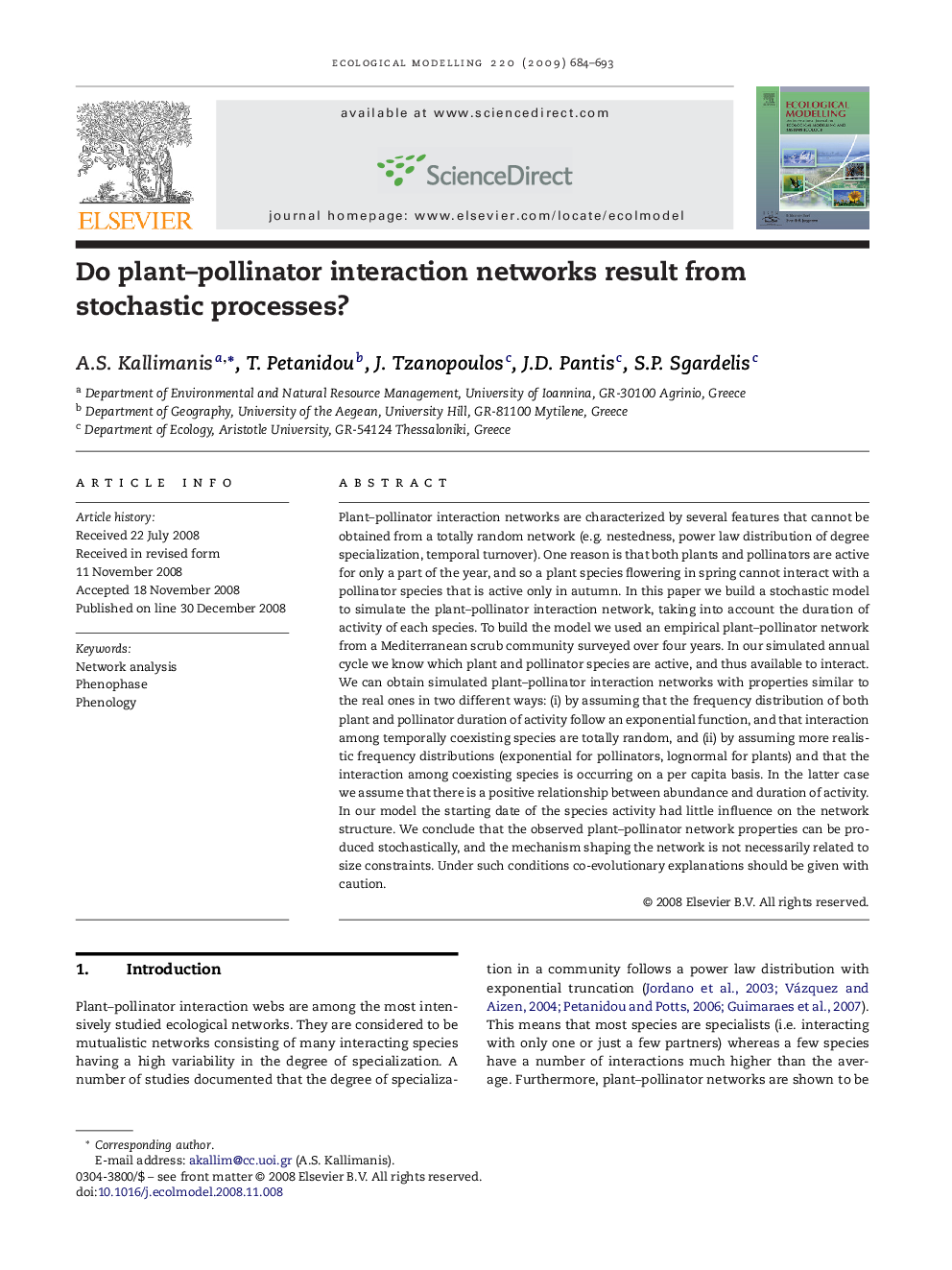| کد مقاله | کد نشریه | سال انتشار | مقاله انگلیسی | نسخه تمام متن |
|---|---|---|---|---|
| 4378197 | 1303467 | 2009 | 10 صفحه PDF | دانلود رایگان |

Plant–pollinator interaction networks are characterized by several features that cannot be obtained from a totally random network (e.g. nestedness, power law distribution of degree specialization, temporal turnover). One reason is that both plants and pollinators are active for only a part of the year, and so a plant species flowering in spring cannot interact with a pollinator species that is active only in autumn. In this paper we build a stochastic model to simulate the plant–pollinator interaction network, taking into account the duration of activity of each species. To build the model we used an empirical plant–pollinator network from a Mediterranean scrub community surveyed over four years. In our simulated annual cycle we know which plant and pollinator species are active, and thus available to interact. We can obtain simulated plant–pollinator interaction networks with properties similar to the real ones in two different ways: (i) by assuming that the frequency distribution of both plant and pollinator duration of activity follow an exponential function, and that interaction among temporally coexisting species are totally random, and (ii) by assuming more realistic frequency distributions (exponential for pollinators, lognormal for plants) and that the interaction among coexisting species is occurring on a per capita basis. In the latter case we assume that there is a positive relationship between abundance and duration of activity. In our model the starting date of the species activity had little influence on the network structure. We conclude that the observed plant–pollinator network properties can be produced stochastically, and the mechanism shaping the network is not necessarily related to size constraints. Under such conditions co-evolutionary explanations should be given with caution.
Journal: Ecological Modelling - Volume 220, Issue 5, 10 March 2009, Pages 684–693